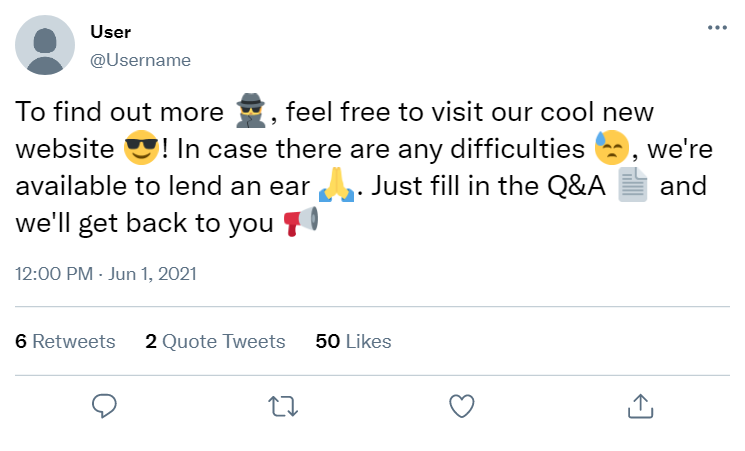Lesson 8Web accessibility principles and standards
- Notion 51 - It all starts with WCAG (The Web Content Accessibility Guidelines)
- Notion 52 - The 1st WCAG principle: Perceivable
- Notion 53 - The 2nd WCAG principle: Operable
- Notion 54 - The 3rd WCAG principle: Understandable
- Notion 55 - The 4th WCAG principle: Robust
- Notion 56 - Understanding the three levels of web accessibility conformance (A, AA, AAA)
- Notion 57 - Can you assess how well a webpage complies with WCAG conformance levels?
- Notion 58 - Using web accessibility principles and standards for social media
- Notion 59 - Review of the main concepts
Notion 58
Using web accessibility principles and standards for social media
Target skills
The accessibility of social media may seem like a tricky issue as social media is more difficult to customise than a digital project of your own making. Yet, you cannot disregard the importance of creating accessible social media content. This importance lies in both social media's massive user base and its successful use for marketing, communication, and information retrieval.
Here are five practices you can apply to make your social media content accessible to users with disabilities:
Provide captions on videos
Captions are helpful for users with hearing impairments, those with a language barrier, and even those who find themselves with a situational disability and cannot play audio.
Facebook's has a webpage dedicated to informing users on how to add captions:
How do I add or remove captions on my video on Facebook?: https://m.facebook.com/help/261764017354370/computer-help/?helpref=platform_switcher&cms_platform=www
Videos can also be better adapted to the needs of users with Specific Learning Disorders. For example, if you’ve structured your video as a Question & Answer (Q&A), include the question as text on screen to remind users what is being answered.
TikTok's Q&A feature is a good example of this adaptation.

Be mindful of your choice of language
Your content will be more understandable if you break up longer paragraphs, use bullet points, and write clearly and concisely. The social media platform Twitter has prioritised brevity of language by only allowing shorter-form messages with a maximum word limit of 280.
Regardless of the platform, always use a conversational tone when relaying information to reach the broadest base of users.
Reconsider your use of emojis
Following the previous recommendation of keeping your language conversational might seem easier to achieve with the use of friendly emojis. Yet, for web accessibility, less is more when using emojis. Each emoji has an assigned description when being read aloud by screen readers. However, some emojis might not translate as you intended. Therefore, the thoughtful and moderate use of emojis is better than using too many.
Another good practice is to use emojis at the end of your text to avoid confusion. For example, you may have written a tweet such as this:

Yet, this tweet would be relayed to screen reader users like so:

That sounds a lot less understandable, doesn't it? Emojis placed mid-sentence can confuse screen reader users about the text’s meaning.
For those interested in how screen readers read emojis, the website Emojicopy allows you to see emoji descriptions from just hovering over their image: https://www.emojicopy.com/
Use the option to add alt-text
Alt-text identifies the elements of an image and is, therefore, helpful for users with visual impairments and even those with low bandwidth issues who cannot load multimedia.
You can find web pages on how to add alt-text to your media on today's most frequented social media platforms:
Instagram: https://help.instagram.com/503708446705527
Facebook: https://www.facebook.com/help/214124458607871
Twitter: https://help.twitter.com/en/using-twitter/picture-descriptions
Format your hashtags and links correctly
The formatting of a hashtag affects the accessibility of social media content, too. Look at the two example hashtags below – which do you think is easier to read?
#accessibilityforall
or
#AccessibilityForAll
The second example makes it easier to distinguish the multiple words in the hashtag. This hashtag formatting technique is called a CamelCase hashtag. It is more suitable for screenreaders and users with Specific Learning Disorders who struggle with reading.
How you format your links makes a difference, too. For users to understand the context behind the link, you should write a descriptive call-to-action. For example, instead of writing "Click here" when referring to an external source, detail the purpose of the link by writing, "If you're interested in reading more about the topic, check out our latest article found in the Articles tab."